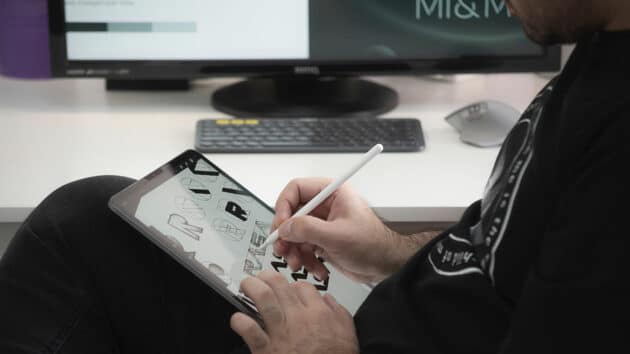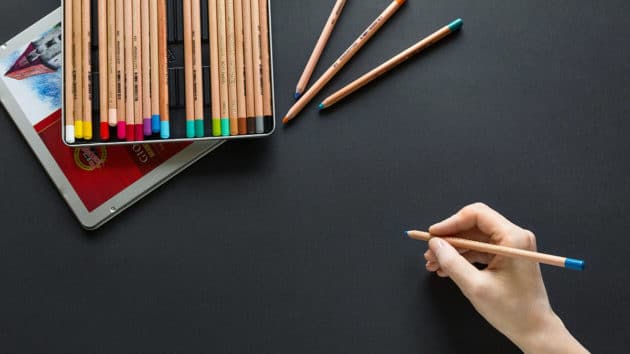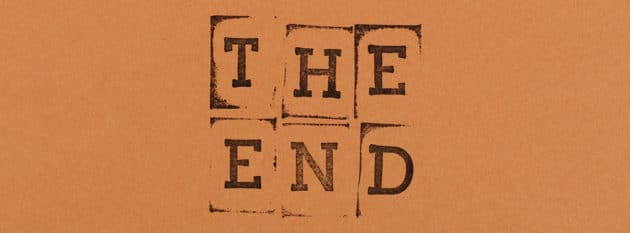Creating visual content to convey messages and ideas is the art and practice of design. In order to engage the audience and visually transmit information, graphic design makes use of a variety of principles and elements, including images, typography, colors, layout, and composition. To produce impactful designs for a variety of mediums, graphic designers rely on their creativity, technical proficiency, and in-depth knowledge of visual communication principles.
Why should I understand the basic elements of graphic design?
Understanding the elements of design is crucial for graphic designers for several reasons. Some of them are:
- Communication: Effective communication is facilitated by graphic design, which is a potent instrument. Designers can communicate messages, ideas, and concepts to their target audience in an efficient way by comprehending the elements in a design. It is possible to improve readability, evoke feelings, and guarantee that the intended message is understood through the use of color, typeface, and arrangement.
- Visual Appeal: Effective design draws the eye and makes a strong first impression. Designers who are adept at graphic design can produce aesthetically appealing compositions that draw in and hold the attention of viewers. A successful and memorable user experience can be produced through the thoughtful application of color, layout, and graphics.
- Branding and identity: The establishment and upkeep of a brand’s identity are both critically dependent on graphic design. Designers may produce visual representations that reflect a brand’s beliefs, personality, and intended audience by knowing how to employ components like color, typography, and photography effectively. Brand identity is strengthened, and brand familiarity is built via consistency in design components.
Creating aesthetically beautiful, practical, and engaging designs requires a solid understanding of graphic design principles. It enables designers to effectively convey messages, build brand identity, produce satisfying user experiences, and succeed in their careers.
Related: 15 Great Ways to Start Your Career in Freelance Graphic Design.
10 Important Elements of Good Graphic Design

In the content below, we will be taking you on a short journey to know the 10 important and basic elements of graphic designing. Stick to the article below to get enlightened on those elements because they are eyeopener.
1. Color
Light interacts with the human eye and the brain to form the visual perception of color. The ability of surfaces and objects to reflect or emit light at different wavelengths is one of such properties. A color wheel made up of primary, secondary, and tertiary colors can be used to arrange the vast spectrum of colors that the human eye is capable of perceiving.
Due to its numerous uses in visual communication, color is crucial in graphic design. The following are some important functions of color in graphic design:
- Drawing Attention: Color is one of the first factors that draws attention and makes a design stand out. Designers may make an impression and draw onlookers to their work by utilizing strong, contrasting colors.
- Meaning: Different colors have cultural and psychological connotations that can be used to convey particular meanings and messages. For instance, the primary colors red and green might represent many things, such as passion or danger, or nature or serenity. To support the intended message or arouse particular emotions, designers carefully utilize color.
- Creating Hierarchy: Color can be utilized to create a visual hierarchy within a design. Designers can focus the viewer’s attention and highlight important information by using different colors to represent aspects of differing importance.
Colors have psychological associations and the power to elicit emotional reactions. Certain emotions or moods can be evoked in people by different colors.
2. Typography
Typography is the practice of organizing and structuring words in a readable and aesthetically pleasing way. For written information to be properly communicated, typefaces (fonts), sizes, spacing, and other typographic components must be chosen, arranged, and used. Because of the following factors, typography is essential to design:
- Tool for communication: Typography is a potent tool for communication. It aids in communicating the message’s tone, feel, and personality. Typography can enhance the entire message being delivered by evoking feelings, creating a visual identity, and evoking emotions in the reader.
- Readability: Making sure that text is clear and simple to understand is the main goal of typography. Designers may enhance the legibility of the content and make it simple for the audience to absorb the information by selecting the proper typefaces, font sizes, and line spacing.
- Visual Hierarchy: Typography aids in creating a hierarchy of visual elements inside a design. Designers can draw the reader’s attention to key information, stress it, and establish a feeling of structure and organization within the material by using a variety of font sizes, weights, and styles.
- Typography hierarchy and readability: The arrangement of text elements to create a visual hierarchy and direct the reader’s attention is referred to as hierarchy in typography.

Important things to remember are:
- Font Sizes: Different font sizes can create a visual hierarchy and highlight key information. For best readability, body text is normally smaller, and titles and headings are often larger.
- Font Weights: A typeface can generate contrast and hierarchy by using different weights (bold, normal, and light). Lighter weights are frequently used for supporting text and bolder weights are frequently employed for headings.
- Line Spacing: Proper line spacing (leading) guarantees that text lines are comfortably apart and simple to read. Readability can be harmed by inadequate or excessive line spacing.
3. Composition
In graphic design, composition describes the positioning and categorization of visual components inside a design piece. To produce a composition that is both aesthetically beautiful and functional requires making thoughtful decisions regarding the positioning, spacing, and connections between pieces. The goal of the composition is to convey the desired message or story of the design while also directing the viewer’s eye, creating visual harmony and hierarchy.
Balance and visual weight: Creating a sense of equilibrium in a design requires the distribution of visual elements, which is a major component of the composition. Three primary types of balance exist:
- Symmetrical balance: The composition is formal and harmonious thanks to the equally spaced elements on either side of an imagined central axis.
- Asymmetrical balance: When elements of diverse sizes, hues, or shapes are in balance with one another, the composition becomes more dynamic and eye-catching.
- Radial balance: A circular or spiral arrangement is produced when elements radiate outward from a center point.
Visual weight describes how important or dominant certain parts are in composition. Visual weight is typically higher for parts that are bigger, darker, or more visually intricate. Harmonious and aesthetically beautiful compositions must be balanced, and their visual weight must be controlled.
See also: 9 Important Tools for Graphic Designers You Must Know About.
4. Space
The areas that elements in a composition occupy and leave empty are referred to as space in graphic design. Positive space, which contains design elements, and negative space, which is empty or whitespace, are two different categories that it can be placed in. Negative space is the area that surrounds and divides the elements that are included in positive space, such as shapes, images, text, and other visual components. In order to produce a harmonic and balanced design, both negative and positive space are crucial.
The legibility and clarity of a design are greatly impacted by space. It is easier for the audience to read and grasp the content when there is adequate space between letters, lines of text, and paragraphs. Additionally, whitespace aids in creating a distinction between various design components, allowing them to be visually distinct and minimizing visual clutter. Too much or too little space can make a design feel disconnected or disorganized. Too little room can make a design feel cluttered and overwhelming. A design’s best readability and clarity depend on striking the correct balance between negative and positive space.
Space can be used effectively to establish a visual hierarchy in a design. In order to direct the viewer’s attention and create a clear hierarchy of information, designers might manipulate the spacing and positioning of items.
Designers can build a composition that is well-balanced and improves readability, clarity, and visual hierarchy by making appropriate use of space. The deliberate use of negative and positive space makes it possible for the design parts to function harmoniously as a whole and to contribute to the design’s overall visual impact and message.

5. Contrast
The creation of disparities or juxtapositions between elements is a key principle of graphic design known as contrast. It is crucial for drawing viewers in, generating interest in the visuals, and effectively conveying messages.
Contrast aids in creating a hierarchy, emphasizing crucial information, and leading the viewer’s attention across a design. Designs that lack contrast may come off as bland, repetitive, and impactless. Designers can improve the readability, clarity, and overall visual appeal of their designs by making efficient use of contrast.
To develop compositions that are visually appealing, designers carefully examine the balance and arrangement of these conflicting aspects.
A design’s use of contrast can effectively direct the viewer’s attention there. Designers can focus the audience’s attention and highlight particular details by cleverly combining contrasting elements.
Designers can build a hierarchy, direct viewer attention, convey messages with clarity and precision, and generate visual impact by using contrast effectively. Designs become more engaging and memorable by adding dynamism and visual intrigue.
6. Lines
In graphic design, lines are crucial because they may be used to create a variety of structures and visual features. They are employed to specify shapes, set boundaries, forge relationships, and direct the viewer’s eye inside a design. Designers can transmit a variety of ideas and provoke a variety of emotions by using the right lines. They can be straight lines, curved lines as well as vertical, horizontal, or diagonal lines.
The orientation, length, thickness, and style of a line can provide a sense of movement, energy, stability, or elegance. They can be applied to a design to add unity, balance, structure, and grids. Lines can also, whether utilized gently or aggressively, create visual interest and support a design’s overall aesthetics and functionality.

7. Shape
Shapes are essential visual components in graphic design and help to produce designs that are compelling and memorable. They can be two-dimensional or three-dimensional. Shapes can be utilized to induce feelings, establish visual hierarchy, and transmit meaning. They improve a design’s composition overall, offer visual interest, and establish equilibrium.
The difference between organic and geometric shapes:
- Geometric shapes: These are exact, regular, and predetermined by mathematical formulas. They consist of rectangles, circles, triangles, and squares. The qualities of stability, order, and professionalism are frequently linked to geometric shapes. They exude a sense of harmony, organization, and reason. Architectural designs, corporate logos, eye-catching icons, and simple, contemporary graphic designs frequently employ these shapes.
- Organic forms: Organic forms are erratic, fluid, and frequently present in nature. They consist of arcs, waves, blobs, and atypical polygons. Organic forms generate feelings of spontaneity, flexibility, and creativity. They are capable of expressing feelings like coziness, harmony, or unpredictability. Illustrations, artistic designs, and creations meant to express creativity or emotion frequently incorporate organic shapes.
Related: 13 Best Graphic Design Software for Windows (Free and Paid).
8. Texture
The visual or tactile characteristics of a surface or object are referred to as texture in graphic design. Designers may give flat, digital media a sense of depth, dimension, and tactility by introducing textures into their designs. Textures can be added to backgrounds, photographs, typography, and other design components. They can be generated digitally or using actual materials.
The term “visual texture” describes the texture illusion produced by visual components, such as patterns or digital effects, without any true physical texture. Contrarily, physical texture involves the application of actual materials, such as cloth, paper, or other coatings, to produce a tactile sensation. A design can become more visually appealing by including textures, both physical and visual.
Based on their properties, textures can elicit various emotional reactions. In contrast to smooth textures, which can evoke an air of elegance or refinement, rough textures might suggest ruggedness or organic features. The texture used in a design can alter its tone, mood, and overall emotional impact.
For instance, a smooth texture could be employed for a sleek and polished appearance or a rough texture might be used to convey an air of authenticity or a handmade aesthetic.

9. Images
Photos (including pertinent photos and illustrations) are essential in graphic design. They have the ability to enhance the overall narrative of a work of art and visually express concepts. Designers are able to make ideas come to life, captivate viewers, and produce a lasting visual experience by choosing and combining pertinent images and illustrations.
By introducing color, dimension, and visual intrigue, images help a design stand out from the crowd. Text-heavy materials can be broken up using them, and the design will become more appealing and usable. Images can help to express messages in a way that is visually captivating by conveying complex information or concepts quickly and effectively.
Designers should make sure that any images they choose complement the design’s aesthetic, message, and purpose. The right images can generate the required feelings, support the brand, and appeal to the target audience. The photos should complement the overall design and heighten its visual impact with respect to style, subject matter, and composition.
Designers may give their works more depth, visual intrigue, and emotional effect by expertly fusing texture and pictures into graphic design. By attracting attention, delivering messages, and fostering a unified visual experience, these components contribute to the design’s overall efficacy.
10. Branding
Graphic design helps to define and visually reflect a brand’s identity, values, and personality. It enables organizations to develop a visual language that connects with their target market and conveys their distinct positioning. A brand’s visual identity and a consistent brand experience across numerous touchpoints depend heavily on graphic design elements including logos, typography, color schemes, and visual styles.
In branding, consistency is crucial, and graphic design plays a big part in upholding brand consistency. Graphic design makes ensuring that a brand is instantly recognized and memorable by utilizing design elements like logos, colors, and typography consistently throughout all brand communications. Consumer brand loyalty and trust are enhanced by consistent design. Graphic design contributes to reinforcing a company’s values and establishing a strong and identifiable brand presence in the market by keeping a consistent visual identity.
FAQs

How do you define graphic design?
The creative discipline of basic graphic design involves merging visual components, typography, images, and other design aspects to express ideas and information.
What abilities are necessary for a graphic designer?
You have to know all the fundamentals of design and design terms. Knowledge of graphic design software, such as Adobe Creative Suite, web design tools like Adobe Dreamweaver, as well as a thorough understanding of typography, color theory, and composition are crucial for a graphic designer.
What types of programs do graphic artists use?
Adobe Photoshop, Adobe Illustrator, and Adobe InDesign are frequently used by designers to create and edit digital images, graphics, and layouts.
How does graphic design affect businesses?
Graphic design is important in defining a company’s brand identity, improving its visual communication, and affecting client perception.
How does graphic design and visual communication design differ from one another?
The fields of graphic design and visual communication design are closely related.
See also: How is Game Design Different from Graphic Design?
Conclusion

Designing functional and aesthetically pleasing designs requires careful consideration of these factors. Every component of a design contributes to its overall impact, clarity, and engagement.
By being aware of the relationship between elements and utilizing these, designers may effectively communicate ideas, establish visual hierarchy, captivate audiences, and provide memorable experiences.
Designs that lack impact, and clarity, or effectively fail to deliver the desired message may come from ignoring or overlooking these components. In order to improve their design abilities and produce more powerful work, aspiring graphic designers and pros should research and further understand these components.
It is possible for designers to make well-informed design choices, push the limits of their creativity, and produce designs that enthrall and engage the audience by having a thorough understanding of the concepts, methodologies, and applications of these graphic design elements. The development of the designer personally and the ability to produce remarkable and significant designs will result from ongoing exploration, practice, and experimentation with these factors.





